The motivating spirit of my work is to help cultivate healing within our social and ecological relationships to cultivate a way of being that is aligned with natural cycles of reciprocity and regeneration.
Serina Fast Horse and Toby Query met as employees at the City of Portland in 2018 while working on an innovative project that centered Indigenous voices and perspectives. This project, Shwah kuk wetlands (which means frog in Chinuk Wawa, a local indigenous trade language) intertwines Indigenous (or relational) and Western (or linear) worldviews. This conversation is between an Indigenous community leader—Serina Fast Horse—and a western-trained white scientist—Toby—who, since meeting, have continued to work together including teaching a course entitled “Indigenizing Restoration” and co-creating the Land Care Collective, an emerging collective aimed at uplifting Indigenous voices through land justice.
Serina Fast Horse: Hi, Toby! Can you get us started by introducing yourself?
Toby Query: Sure, I am a father, a partner, and an ecologist with the City of Portland. I am a white settler and have mostly lived in the Pacific Northwest. I have been trained in western science and have worked in natural area land stewardship since 1999. Serina, can you introduce yourself and reflect on how we first met?
SFH: Sure. I’m Serina Fast Horse, I am a Lakota and Blackfeet woman who was born and raised in Portland. I am currently a Co-Director for the Northwest Environmental Justice Center based at the Institute for Tribal Government in Portland State University (PSU) and am also the owner of Kimimela Consulting. In both my roles I work to serve communities to help them reach their goals related to environmental and cultural wellness by serving as a navigator, facilitator, and liaison with agencies and organizations who hold land and resources. All the work I do is relationally focused because I deeply believe in the power of good relationships, with ourselves, with each other, and with our Mother Earth. The motivating spirit of my work is to help cultivate healing within our social and ecological relationships to cultivate a way of being that is aligned with natural cycles of reciprocity and regeneration. I am grateful and honored to be on this path with the help and guidance of my mentors and ancestors who have come before me.
You and I met through our work at the City of Portland Bureau of Environmental Services (BES). At the time I was an intern who was recruited through a collaborative partnership with Judy Bluehorse-Skelton of the PSU Indigenous Nations Studies Department (INST). I was taking classes to earn my second major in Indigenous Nations Studies and coordinating the BES Community Watershed Stewardship Program. While I was there, the collaborative partnership with Judy was growing and she helped bring together a group of Indigenous community leaders to explore opportunities for collaboration at Shwah kuk, which was called The Pumpkin Patch at the time. That’s when you and I met and started working together. I remember spending time in the field, and I noted how generous you were with sharing your knowledge of ecology. You also showed interest in my knowledge and worldview as an Indigenous person. Your approach in asking questions was always respectful and I could tell that you were listening deeply. And you showed reciprocity through your actions, I could see that you were making shifts in your work based on what you heard from me and other Indigenous partners. Your commitment to honoring Indigenous peoples and ways of knowing has helped to strengthen our relationship since.
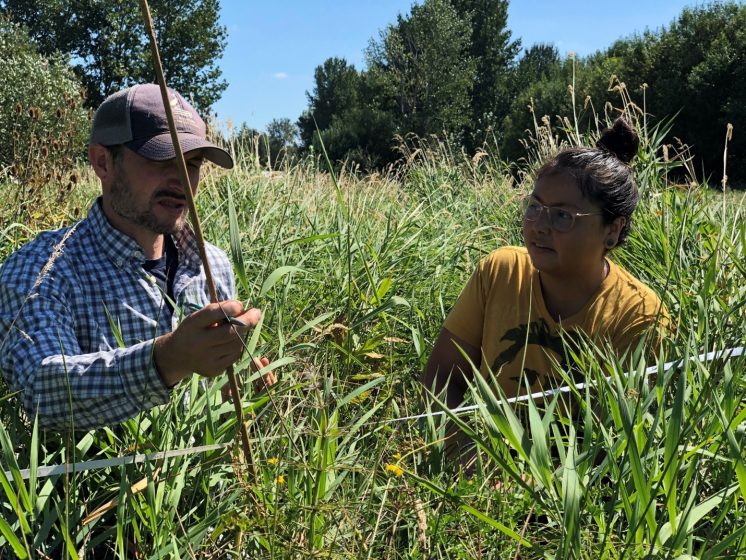
Now my question to you is what led you to become an ecologist at BES? And why was the Indigenous collaboration at Shwah kuk of interest to you?
TQ: I’ve always had a love of being outside and being in nature which led me to be trained as a western ecologist. I first researched birds like the spotted owl and the great green macaw hoping this would help save these species. Conservation biology is an important component in saving species, but I found the economic and political systems that drive species to extinction weren’t changing the underlying causes.
Since working with the City. I have been able to transform urban natural areas to have more diverse plant and animal communities. Our program plants over 50,000 trees, shrubs, and herbaceous plants a year, as well as the work to help them thrive. Being a curious person, I’ve always set up experiments to test different plants, different methods, and timing, to have better outcomes and to learn about how things are connected. I also saw my field of restoration ecology become somewhat ossified in the methods used and wanted to combine other methodologies and ideologies in my work. This is when the offer to be part of the Shwah kuk wetland project came along, through Jennifer Devlin at BES. I had worked with some Indigenous community members and Tribal ecologists, but this project brought a container to slow down, share ideas, and created an incubator of ideas that felt important. I also had been reading and researching the history of our nation, unlearning the white settler narrative, and learning history from Indigenous perspectives. This project gave me permission along with guidance on how to relate to the land and to be in better relations with the local Indigenous community, which governments are often adversarial to. I feel responsible to care for Shwah kuk in a good way, in ways that I haven’t before. As Judy says, “heal the land, heal the people” and this project has been striving to embody that.
This project brought up a lot of discussion around how white-centered organizations like BES can work best with Indigenous communities. There is a long history of excluding native peoples from the table altogether, so asking input is often met with some resistance. In your work with this project and others, what are some challenges you have found in this work and what have been some synergies?
SFH: It is challenging to work within colonial institutions like the City of Portland as an Indigenous person. They were not built with us in mind. They were built on foundations of hierarchal ideologies that deem Indigenous people to be inferior. And it shows. We can see the lasting inequities of colonial thought. Our peoples and cultures are misunderstood and dishonored. Historic land theft and broken treaties are not common knowledge, and we are often not thought of at all. There is definitely a lack of representation. So, when we are engaged it is not always in an informed way. And when we are, culture clashes occur.
During the life of this project, we have faced the most challenge when Indigenous ways of knowing and being do not align with or are outright forbidden by agency policy. For instance, the simple act of being present on the land. When we first started this project back in 2018, BES habitat enhancement practices included restricting human access to land that had been replenished with native plants. Indigenous people have a differing worldview, one that recognizes the necessity of human presence on the land in order to have a reciprocal relationship with the lands that provide us livelihood. This concept has been called cultural ecosystems, a term that acknowledges the inherent necessity of reciprocity for ecosystems to thrive and recognizes our vital and interconnected role as humans. This is directly in conflict with the Western anthropocentric tendency to other humans from the whole of nature in ways that either falsely demonize or elevate our species. This cultural clash has since been remedied at Shwah kuk through the practice and deep listening and responsiveness. Indigenous community members shared their perspectives and visions for the land and BES staff practiced accountability by doing institutional work, advocating, and addressing bureaucratic barriers to respond to community interests.
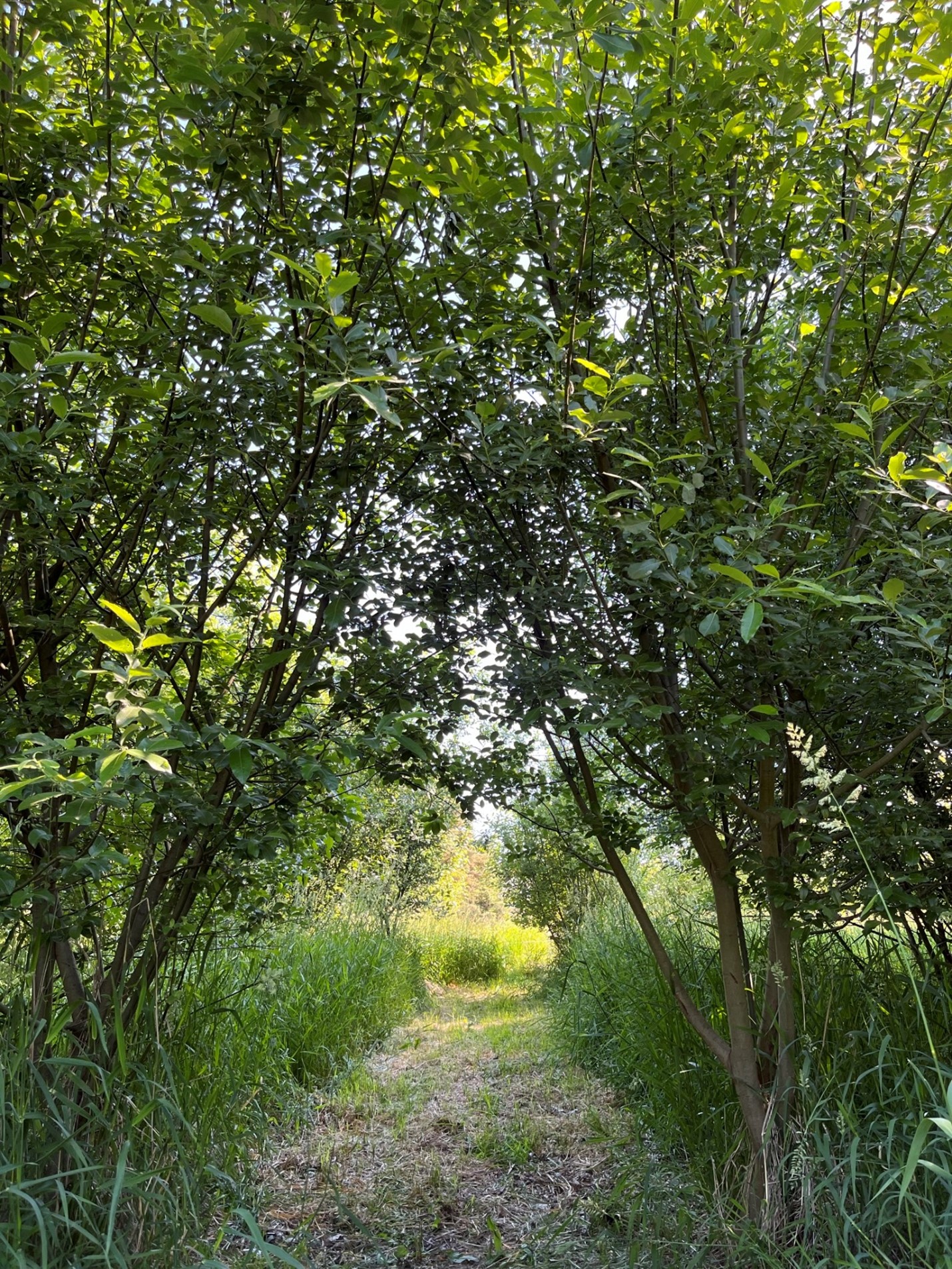
However large our disparities in worldviews are/were at times, synergies did and still do exist in our collaborative work. While we built our reciprocal relationship with Shwah kuk, we also built our reciprocal relationships with each other. Mutual knowledge sharing has been a great gift of this project. All of us on the project poured our culture, lived experience, and scientific knowledge into our work together. As our capacities and trust grow, we all benefit through advancing equity and contributing to healthier cultural, social, and ecological landscapes.
On the topic of institutional change, my next question is what is it like advocating for Indigenization and Decolonization within an institution that was built on the erasure of Indigenous peoples?
TQ: It’s challenging to resolve the history both internally inside my body and within the government structure, but here I am stumbling forward towards reconciliation. The City government has a troubling history and wouldn’t exist if it wasn’t for the forced removal and acts of genocide to the many Indigenous tribes and bands of the area. All the founding systems, protocols, codes, and regulations were created by white (mostly male) people advocating for white (and mostly affluent) people. The tone has changed a lot from the founding, but the hierarchy, political structure, and Western lens has a hard time meeting emerging challenges, such as new equity and anti-racist values. These values clarify the importance of raising the voices of marginalized communities in all that the City undertakes.
Embracing cultural ecosystems, that situate people as a necessary and life-affirming presence in the landscape as you just mentioned, has many barriers. By restricting Indigenous peoples access to restore “right relationship” to the land continues the erasure of native peoples. The City is working through these issues as they get daylighted.
A question I return to is: Is the City ready to collaborate with Indigenous communities and Tribes in a meaningful way? From our relationship with the Shwah kuk project, I have seen a real commitment from my colleagues and leadership, but there is more work to do to institutionalize the support around this project and have it continued as a truly Indigenous-led project. There are staff at other City bureaus demonstrating significant commitment to this work as well.
In the field of restoration ecology, there is an acknowledgement that the ways Indigenous peoples relate to and steward the land, has the best outcomes in terms of biodiversity, climate resilience, and clean water. In fact, 80% of the world’s biodiversity are in areas with Indigenous stewardship. The seed that we planted together with our collaborators at Shwah kuk wetland is an excellent example of work towards amending some past harms, but it comes with the possibility of trust being broken if the long-term commitment of the City isn’t fully realized.
What are your suggestions to non-indigenous people and/or entities (government or otherwise) that want to work with native communities?
SFH: I think their first step is to do some internal reflection about why they want to work with Native communities and what exactly their goals are. I have seen a lot of agency and non-profit folks enthusiastically invite Native people to a meeting to explore partnership without any thought further than wanting to work with Native communities. Those conversations tend to be awkward and short-lived because the ask is so vague.
Those who want to engage in meaningful collaboration with Native people need to both have a clear and coherent ask or offer to the community and take steps that ensure that the project has opportunities for Native community benefit. You brought up the importance of trust and tending to the trust that is built through relationship. Agencies can earn trust at multiple moments during relationship development. At the beginning, it is important be very intentional about approaching engagements, taking the necessary time to prepare individually and as an institution to ensure that Indigenous people are well informed about the purpose of the engagement, what the opportunities are, and how the agency is committing to the work. After the initial phases, trust is built upon by practicing reflective listening and responding to the interests, concerns, and requests made by community partners. Once trust is earned, it needs to be nourished through continual responsiveness and commitment. Trust is a foundational element of healthy, reciprocal relationships. It takes time to build and can be fragile.
I also want to uplift that it is vital for staff to seek out education and training about Native American history and how their agency or organization has contributed to and perpetuated colonial practice before engaging. Native peoples of what is now the United States have enduring trauma from historical atrocities and continue to face the ramifications in the forms of erasure, marginalization, and violence. These are wounds to learn about and work toward healing and reparations.
What advice would you share with other non-native land “managers” who would like to start collaborating with Indigenous communities?
TQ: Yes, I agree with your recommendations. For me, it has been a meaningful exercise to trace my family history alongside Indigenous history of the so-called United States. My family has benefited from homesteads in Montana and Washington that were given free to my ancestors after Indigenous peoples were forcibly removed. And I have a great grandpa that was a missionary on the Nez Perce reservation. Connecting my family history with Indigenous history gives me a deeper commitment to work towards healing.
Beyond tracing our ancestors, finding community to process internal and external work is important. Tahni Holt, who is an amazing artist and also my partner, has been a huge support. And having self-care somatic practices keeps me rooted and moves unneeded patterns out of my mind and body. Committing to change and justice requires a rewiring, or at least it has been for me.
Other tips I’d offer include being ready to slow down and check for your own need to have something accomplished. Building trust will take time, and deep listening and reflection are muscles to exercise. It can feel very uncomfortable for Native peoples to be in western institutions, and going to Native-run community events shows your commitment.
For the Shwah kuk wetlands project, having you, Serina, as a liaison between the City and Indigenous collaborators was key to not only to organize meetings, but to translate between Indigenous leaders and agency folks. Cultural differences can escalate to distrust if there isn’t patience, translation, and dedication to work through differences.
And then to elaborate on what you mentioned as Native community benefit. Early on in a project, there should be money and resources that are set up beforehand to pay for Indigenous community involvement. This was a challenge for us and continues to be a challenge.
What is an example of a project that you have worked on that has inspired you to continue your work?
SFH: Working on the Shwakuk project was a huge source of inspiration for me because in the 5 short years I was with the City, I witnessed transformation. We set out to change the landscape of Shwakuk, from a fallow pumpkin patch to a healthy wetland habitat, and as the years went by our influence was undeniable. We got to watch one lone willow turn into a willow grove and a camas patch bloom vibrant violet in the spring. It is a beautiful thing.
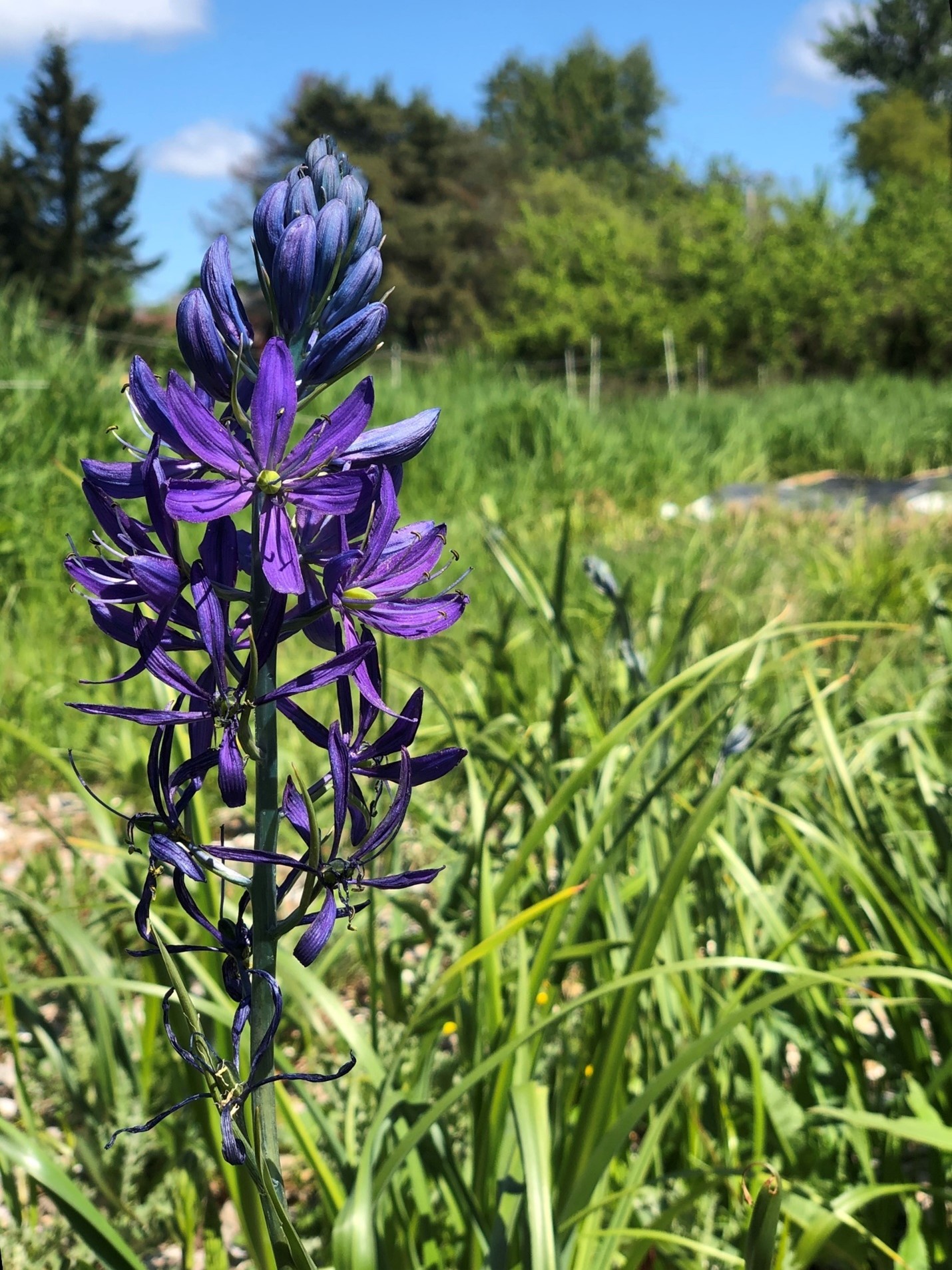
The land wasn’t the only thing to transform, I also got to see BES grow through responsiveness and adaptability. BES staff listened deeply to their Indigenous partners and stayed committed to internal advocacy work that was needed to change inequitable practice and policy. Being there to witness this change has made me believe that systemic change is possible. Now, all of the work I do is to help uplift Indigenous leadership in just systemic change to help create a holistic path to healing our ecological and social communities for our future generations.
What systemic changes have you seen since you started this work? And how did those changes come to be?
TQ: The biggest shift is understanding the connection between healthy communities and healthy nature. I’ve shifted my approach to land stewardship from being an expert who knows what is best for the land, to one where I am working for the Indigenous community. Indigenous stewardship and cultural survivance are necessary for social and ecological well-being. Being a part to uplift Indigenous voices in my field is important for our planet.
My learnings extend to the other natural areas I steward as well as my network of colleagues. I focus more on taking care of desired plants, rather than focusing on killing introduced plants. I focus more on soil health and include mycorrhizal fungi and decomposing fungi as essential components of the ecosystem. Herbicide use was clearly prohibited at Shwah kuk in our discussions with Indigenous leaders, and that has extended to most of the areas I steward. Having spaces for healing, sustenance, and Indigenous cultural practices in the City is invaluable. The living willow dome at Shwah kuk is an embodiment of this change. A shady structure that provides for birds, deer, and people, that was designed and built by students, which concurrently cleans the water, improves soil, and cools the earth.
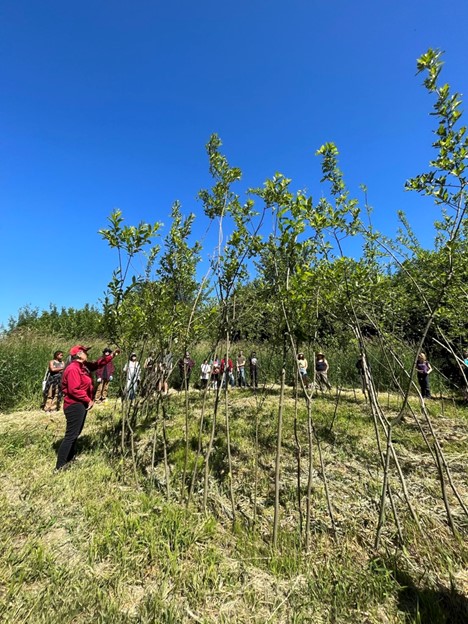
The Shwah kuk project was seeded by the decades-long friendship and partnership between Jennifer Devlin at BES and Judy Bluehorse Skelton at Portland State University. They co-conspired to make the project a reality and graciously invited us to be part of it!
All these shifts came to be through meetings, field trips, and exchanges with Indigenous leaders in this project. And I’m working towards a certificate Indigenous Traditional Ecological and Cultural Knowledge (ITECK) at PSU to continue my learning. And for you, how do you envision relationships between people and the natural world for thriving futures?
SFH: There is a great need for a shift of values in our societies. We need to return to a relational way that deeply acknowledges and holds reverence for the interconnected reliance on reciprocity that weaves all beings as a whole. Lakota people call this the sacred hoop, a symbol of unity.
We serve an invaluable purpose in this sacred hoop. Just as the breath of trees provide clean air and the buzz of a bee pollinates our flowers, so too do humans have contributions to make. It once was that our ancestors knew and served in their vital role to protect the longevity and vitality of life. As place-based peoples living in relationship with the land, plants, animals, and all other beings around them, they had a deep understanding of reciprocity. That, as people who were inextricable from the land, they had to take care of it as if they were one. Because we are one. And we need to be of one mind with the sacred hoop. It is our responsibility to take care of the land that gives us life, our Mother Earth. To use our gift of consciousness and critical thinking to be the stewards we have the capacity to be. To be intentional and careful in our actions, to think of what our impact will be in the short and long term.
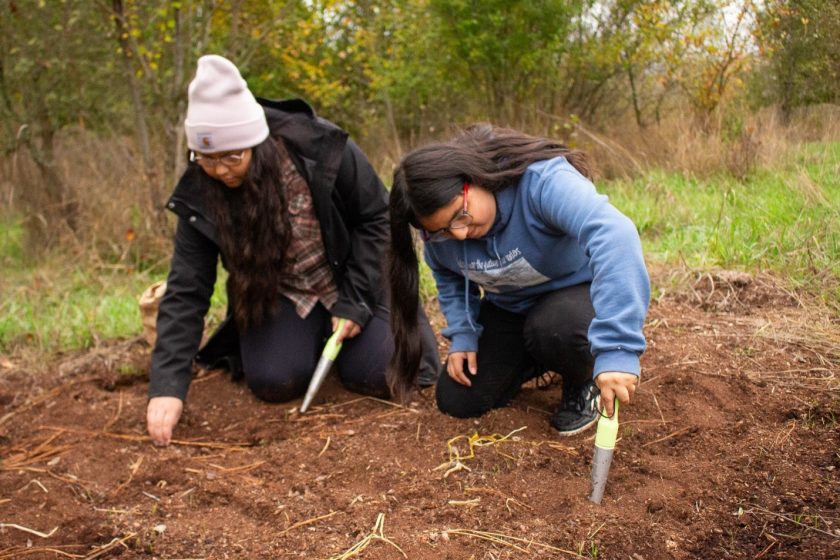
These actions can take many forms. It begins with recognition and reverence for the gifts we are given. To look around and give thanks for all our relatives who make this life possible. To say thank you to the sun, moon, stars, waters, air, soil, stone for providing us with the foundations of all life. To say thank you to the plant nation, the swimmers, winged ones, creepy crawlers, four-leggeds, and all other beings for everything they offer to the whole. To sit with that gratitude long enough to truly comprehend that we are nothing on our own, that separation is an illusion. And let that notion guide us. To step lightly. To take only what we need. To educate others. To make an effort to clean the messes that have been wrought by human carelessness. To make a new path forward and return to our original purpose.
What about you? What systemic and/or cultural changes do you see still need to occur?
TQ: What you said was beautiful. To express that sentiment differently, there should be a larger vision to build a culture for the common good with an emphasis on reciprocity. A culture that works for the benefit of all life and recognizes all peoples and plants and animals as relatives. Environmental Justice principles should be adopted throughout business and government. Resources of land, workforce, and money should be allocated to fulfill these goals. This will translate into clean water, clean air, cooler temperatures, abundant wildlife. And all people will have time to practice their cultures across race, class, and other categories.
In my work as an ecologist, I’d like to see more resources going to build up a diverse workforce that stewards and protects lands. Lands would be managed using diverse cultural lenses, with Indigenous peoples as leaders. For environmental justice and antiracism to be fulfilled, land and resources need to be transferred to Indigenous peoples. Outcomes that benefit Indigenous communities will benefit all of humanity. Shifting to a relational worldview is needed as that is the only worldview that will cause a shift towards balance in our world. We must embrace science that values and respects the living world and sees humans as nature. Through my work with you, Judy Blue Horse Skelton, and others, I’m learning that humans can be a force for good, a force to re-weave the world, creating better futures for our children.
About the Writer:
Serina Fast Horse
Serina Fast Horse (Lakota & Blackfeet) is a lifelong member and emerging leader of the Indigenous community of Portland. With a foundation of interdisciplinary studies in Community Development and Indigenous Nations Studies, she holds a rounded worldview that prioritizes community-focused and relational approaches.
Toby Query and Serina Fast Horse
Portland
About the Writer:
Toby Query
Toby Query is a father, husband, and ecologist. As part of the City of Portland’s Revegetation Program since 1999, he stewards natural areas for all Portlanders. He founded the discussion group Portland Ecologists Unite! which created spaces to learn, discuss, and connect over ecological issues.


